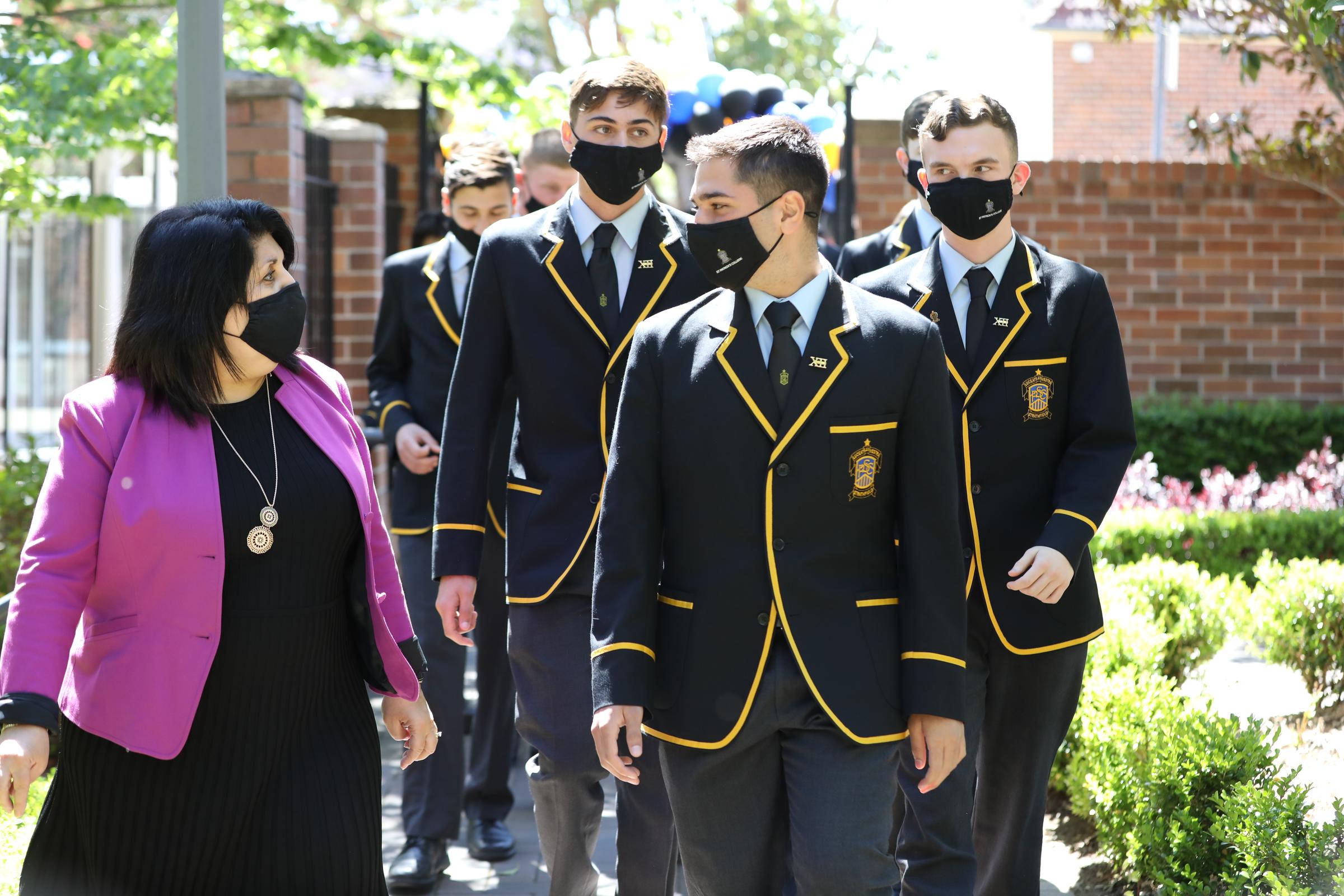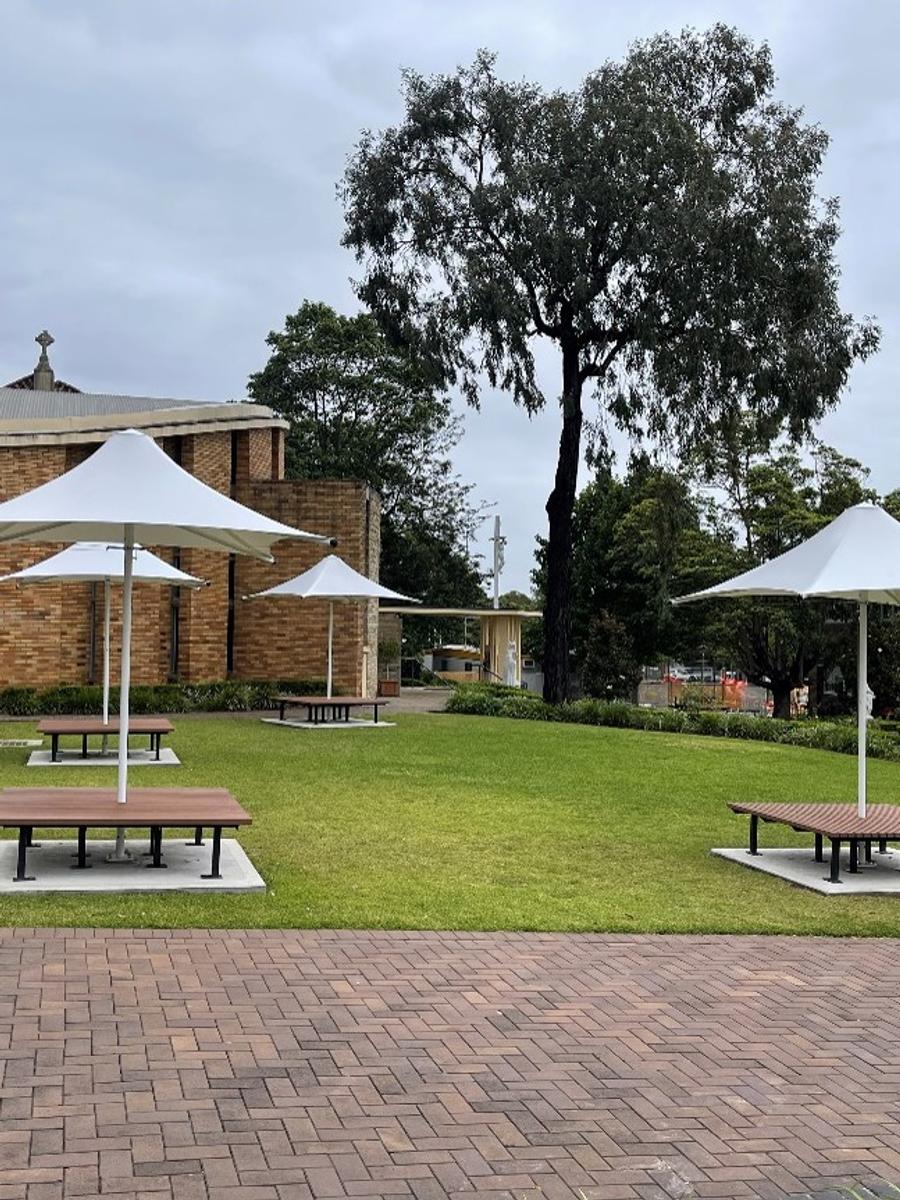Principal

This week, I read that another private, single-sex boys’ school is considering becoming a coeducational institution (Top private boys’ school Newington considers becoming co-ed, SMH, 16/2/2022). The school’s chairman wrote to parents and alumni on Wednesday to outline the plan, acknowledging that the school’s existing demographics will not be “as appropriate in the decades to come as they are now”. This news prompted a few questions directed to me as to the future directions for St Patrick’s College, Strathfield. I can be emphatic when I respond that the College has no such plans; rather, we are intent on strengthening our approach to the education of boys. We want the College to not be a school with boys in it, but rather we want to be a College FOR boys.
Our strategic plan inspires us to be a Beacon for Boys’ Education. We are a member of the International Boys’ Schools Coalition, and we are tapping into the resources and shared wisdom of similar schools all over the world.
While young men and boys can and do excel in many types of educational institutions, schools for boys focus with intention on learning that addresses not only how to excel in academics but also how to grow into a young man of integrity and empathy.
In engaging and supportive single-sex environments, students explore their values and establish a foundation for making responsible decisions; they explore their own definitions of self, who they are and who they want to become; they learn to forge healthy relationships; they step out of their comfort zone to explore their full potential.
They are preparing for their roles in a globally connected world.
Here’s how that happens.
1. Schools for boys understand and celebrate boys.
Schools that make the intentional choice to focus on the intellectual, physical, social, and emotional lives of boys and young men share an appreciation for the intensity and complexity of boyhood. Educators at boys’ schools celebrate and value all that it means to be a boy.
With years of experience, and in collaboration with their peers, teachers at boys’ schools encourage their students to grow and mature at their own developmental pace, using teaching strategies that address learning styles specific to boys. They understand the different and complex worlds of the primary school boy and the young man preparing for university. And they strive to support each individual’s needs and aspirations.
These schools recognise that boys most often are physically active, competitive, and apt to take risks, characteristics that are channelled into their learning experience. Many schools use flexible schedules and class times that permit students to move around throughout the day. Educators stimulate a boy’s interests with a mix of academics, arts, music, or athletics to continuously engage his mind and body. Faculty members also acknowledge the full range of boys’ emotions and vulnerabilities, broadening their spheres and, ultimately, fostering their ability to interact meaningfully with girls and women.
Through action research projects, teachers at member schools of the International Boys’ Schools Coalition (IBSC) continually update their knowledge of best practices in all-boys education. The IBSC offers professional development opportunities that foster in teachers and administrators at all levels a passion for educating boys.
2. Schools for boys seek first to build good men.
In addition to pursuing high academic achievement, schools for boys share many broad goals: to promote well-being, to develop resilience and empathy, and to see that each student achieves his potential. But none is more important than the essential goal of building good character and, by extension, of helping each boy and young man make responsible choices and live an honourable life.
A commitment to integrity and a strong ethical foundation are a school’s first priorities, and educating students about how to become a good man informs every aspect of the day. Some schools do this teaching with an official code of conduct; others have developed a formal character education curriculum; a great many teach critical values through their faith-based affiliations. Often it is the experience of performing with the orchestra or playing on the football team that affords a lesson in courage, perseverance, or teamwork.
Each initiative is strengthened by outstanding faculty who model ethical behaviour daily, and also by student leaders, counsellors, and other mentors. Boys learn that there are clear expectations to do what is right. They also learn that there are many routes to becoming a good man.
We have a vibrant and active program of service learning, Shine our Light (SOL) service, that encourages students to work within the greater community to help others.
3. Schools for boys know that boys develop and learn in different ways.
It is a simple fact that boys and girls grow at a different pace. Boys’ strengths are different from those of girls. While girls generally develop earlier physically and socially, refining their reading and writing skills sooner, boys are more spatial and visual by nature, and they demonstrate a natural affinity for areas like abstract mathematics. They are also hard-wired to learn more easily through action than words.
Using fMRI (functional magnetic resonance imaging), researchers have observed differences between the developing male and female brain that demonstrate why boys and girls learn in different ways. Boys’ brains are wired to require movement, space, action, and rest. They also learn better when material is presented in small portions. Thus, a typical coeducational classroom that favours verbal and auditory learning can put an active boy at a disadvantage.
One of the important advantages of a single-sex education is the opportunity it presents to create a learning environment, literally and figuratively, that accommodates what boys and young men need. In a school that is boy-centred, teachers introduce more kinaesthetic and sensory experiences into their curriculum, engaging boys more fully in their learning.
Educators like Abigail Norfleet James (Teaching the Male Brain: How Boys Think, Feel, and Learn in School) have translated brain theory into classroom practices for teachers of boys and young men, identifying tangible ways to address natural weaknesses as well as strengths.
4. Schools for boys teach in ways that boys learn best.
Each faculty member in an all-boys school has made a conscious choice to teach boys. They enjoy boys’ irreverent humour and draw energy from their natural exuberance. Their passion to teach boys requires a commitment to build relationships, craft a curriculum, and lead a classroom that engages each student in the way he learns best.
As specialists in boys’ education, teachers take into consideration the interests and talents unique to boys when they prepare each lesson. Because they know boys often prefer to work cooperatively, faculty can use teams effectively in project-based assignments. And because they understand the rhythm of a boys’ classroom, they can plan physical activity into class time and extended breaks like recess into the school day.
Classrooms filled with boys are rarely quiet. Research conducted at boys’ schools has demonstrated the importance of action and accomplishment in teaching young men and boys. Educational researchers Michael Reichert and Richard Hawley have found that successful lessons often introduce a memorable element — a novelty, kinetic activity, game, or role play — that facilitates the intended learning outcome. Learning swordplay can make the text of Romeo and Juliet more interesting and approachable.
The work of educator Adam Cox stresses that boys need to know why something is important in order for it to have significance for them. “Boys,” he says, “thrive on purposeful work” and “relish real-time achievement,” when they are assigned tasks that give their school experience personal meaning.
5. Schools for boys help students discover and explore their full potential.
Without the social pressures of a coeducational environment, students in an all-boys school can explore the full range of their personalities and potential. Eschewing stereotypes, they discover they have many roles to play as a scholar, athlete, artist, musician, and friend.
By stressing the importance of subjects like literature, languages, music, dance, drama, and the visual arts within the curriculum, a boys-centred school assists students in finding their innate creativity and imagination, while developing their communication skills and pursuing other strengths and interests.
Risk takers by nature, boys find a new comfort level with non-traditional subjects and activities when they are encouraged to do so by trusted mentors within the safety of a close-knit community. Young men, who may not step up in the presence of girls, take on leadership roles at all-boys schools, often heading community service programs or serving as mentors to younger students.
Boys’ schools have a key role to play in fostering what psychologists like Michael Thompson (Raising Cain, The Pressured Child) call “emotionally literate boys,” who respond to others with empathy and compassion. Such schools appreciate that boys “will not express feelings as girls do” and provide guidance in coping with the many expectations schools, parents, or society may have for them as young males.
6. Schools for boys foster brotherhood and lifelong friendships.
Working together in the classroom, on the playing field, or in the performance hall, students are united by a special bond of brotherhood. Many boys’ school graduates say the friendships they developed with their peers and with faculty are among the most important benefits they carry with them from their schools.
Relationships are critical to a boy’s learning according to researchers Reichert and Hawley. They report that boys thrive in an educational environment where they first establish positive, trusting relationships with teachers whose high standards and subject mastery students value. They write, “…[R]elationship is the very medium through which successful teaching and learning is performed.”
In this reciprocity of relationships, where teachers are forthright and caring, boys also develop the confidence to drop their guard and give of themselves. This relationship-based education model not only enhances the learning process, it also contributes to a boy’s growing sense of belonging to his class, his team, and his school. In the outstanding teachers, coaches, and counsellors who are by their sides each day, boys find important role models. Female faculty members play a key role in fostering positive, respectful attitudes toward women. These relationships also promote empathy, courage, and resilience.
This connection of brotherhood extends to a broader community of what many schools call Old Boys — alumni who stand ready to positively support these young men now and in the future.
Progress on the Scientia Building
Things are moving at a great pace and this week we have seen the first of many concrete pours. Hansen Yuncken has been fabulous in keeping the building on track despite many inclement days. We much appreciate their efforts in respecting Breen Oval and for conducting this significant work around a school site.
Losing the Breen Oval seats has meant the boys have had limited places for down time at Recess and Lunch. We have addressed this by giving boys the opportunity to run about on the Back Ovals and by increasing the amount of seating and shade for the boys. A great job has been done just outside the Robson Auditorium.
In Memoriam
We pray for Dominic Toomey (Year 9) and Zachary Toomey (Year 7) on the loss of their grandmother, Neraide Parolin who recently passed away.
Eternal rest grant unto her O Lord and let perpetual light shine upon her.
May she rest in peace. Amen.
Dr Vittoria Lavorato
Principal
SPC boys can do anything!
**except divide by zero


